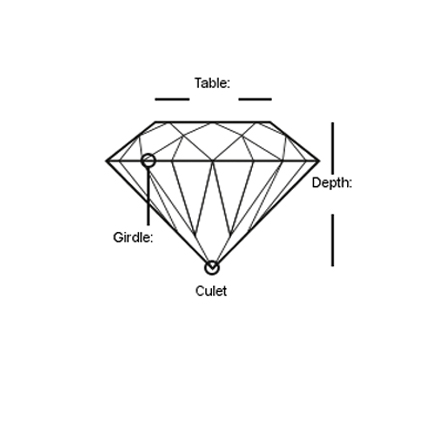The ideal cut of a diamond is something that even the GIA hasn’t been able to crack to this day. Sure there is a lot of myth buzzing around the concept and with that, some misconceptions and misgivings, but frankly, there is nothing as one ideal cut. In order to find the cut that’s ideal for your jewelry, you need to learn some math here. Sure the math of angles and facets cannot outdo the sparkle and everything, but it will give you some understanding of why some stones sparkle better than others. However, if you wish to bypass all the complexity and go straight into grasping the basics of it, here is an outline.
There are some diamonds that are cut to give them the maximum carat weight. As a result, a stone smaller than a carat looks nearly as big as a carat to the naked eye. That’s because these stones are cut to have a spready table. That’s like a prayer answered for buyers who are stubbornly focused on buying a diamond that looks big but costs less. So what a jeweler does is, he cuts the flat part which is called the table, wide. That surely takes an instant toll on the depth of the cut, but it at least makes the top look visibly wider. With the lack of depth in cut, the stones do not reflect light as much, but that’s only a little price to pay for the apparent increase of size.
Before going into the idea of a perfect cut, you must understand the anatomy of a fully-cut diamond. The top or the flat surface is the table, and the bottom peak is the culet. In between, there is the girdle which is the little flat part that surrounds the stone at the fattest part in the middle. The height of the stone from its table to culet is its total depth and that from under the girdle to the culet is its pavilion depth. The crown angles and star, pavilion angle and the star length determine the degree of reflection and thereby, the brilliance of the stone. The table controls the visual size of the diamond.
As for the perfect cut, there is quite a bit of math involved in it. But, realistically speaking, shaping a diamond from its rough state to a perfect cut is not always a practical goal.






